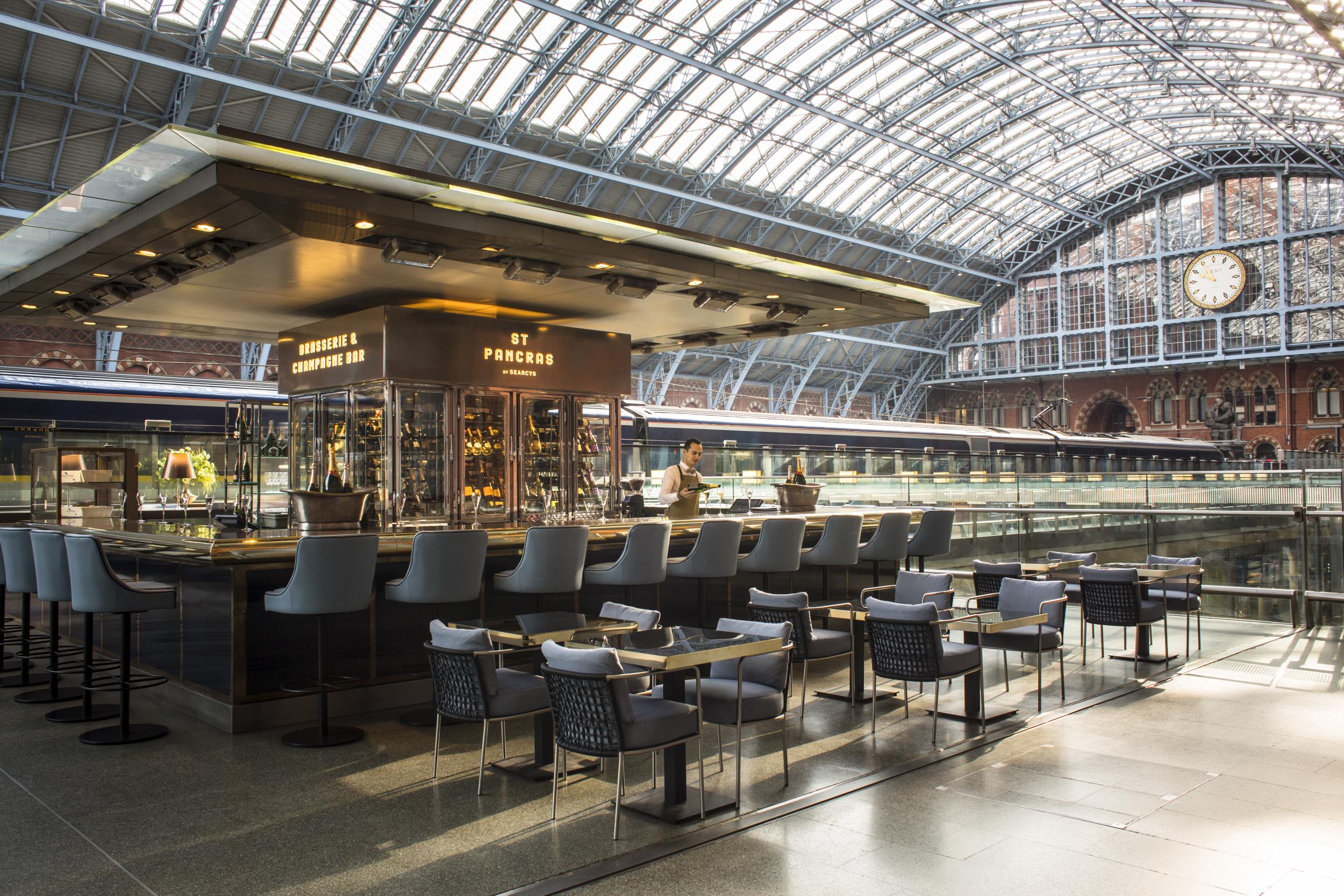Why St Pancras station is the best place to learn about champagne
English sparkling wines are hitting their stride, and there’s no better place to learn about them than at a Searcys’ Champagne School event

“If we did a blind test, I don’t think you would be able to taste the difference between this and champagne.”
So says Razvan Tudor, our guide through a sea of sparkling wines, as we sniff and sip, savouring the “medium finish” and “light, summery flavour” of the first glass.
I’m not in Italy quaffing on prosecco, nor in Spain guzzling cava. I’m certainly not in France – though I can see the Eurostar that would whizz me to Paris in just over two hours through the window. No, I’m in St Pancras station in London – and the delightful flutes of fizz in front of me are all from English vineyards.
Although geography means they can’t claim to be champagne, each of the three sparkling wines we’re trying today at Searcys’ Made In Britain “Champagne School” at St Pancras Brasserie is produced using the traditional method, meaning bar manager Razvan is quite right – I really can’t tell the difference.
Sitting on elegant bar stools under flattering lighting, it’s easy to forget we’re in a major city transport hub as, directed by Razvan, we study the straight vertical line the fine bubbles are making from the base to the top of the glass: a sign of quality.
This first tipple is produced by Greyfriars, a vineyard just outside Guildford. We’re generously topped up as Razvan explains that to say they use the “traditional method” vineyards must include a combination of only three specific types of grape (chardonnay, pinot noir and pinot meunier), must ferment the wine for a second time inside the bottle, and must rest it for at least 15 months.
This one, which he describes as entry level, slips down easy. A little too easy – before I know it, I seem to have seen off two glasses. Thankfully the first course of our paired plates arrives; each is picked to complement the fizz, using ingredients sourced from the UK. To start is tomato soup with a twist – the chilled, clear broth is packed with concentrated flavour, spiked with colourful tomato pieces and sweet, acidic cubes of balsamic jelly.
With the next sparkling wine, a 2014 vintage from Furleigh Estate in Dorset, Razvan tries an experiment with us. First he lets us sample it poured straight from the bottle – it’s made from black grapes and it’s drier and bolder than the first, with more backbone and hints of cooked plums and red berries – before pouring us a glass from a decanter. We look at each other aghast – who ever heard of decanting champagne? – but the taste is completely different, less bubbly with a rounder flavour.
Four glasses down (I’m still sober enough to do basic arithmetic – just) and our second paired course arrives: a bowl of young peas and broad beans with spelt and feta. It’s fresh and light, a nice contrast to the fuller bodied wine. My only concern is that it might not be enough to soak up the plethora of bubbles I’ve already consumed, but before I have time to worry my glass is being filled once more.
The final wine is from Nyetimber in Sussex, one of the oldest winemakers in England. It’s been rested for a full three years and it shows – the flavour is more complex with nutty notes, the perfect accompaniment to our dessert course of a delicate Earl Grey parfait with lemon sorbet.
“All English ‘champagne’ houses need is a bit more time,” Razvan says as he refills our flutes for the last time. “The oldest ones are 25 years old – so they’re doing pretty well when you compare them to the oldest French houses founded in the 18th century.”
I can’t help but agree. You can keep your Moëts, your Veuve Clicquots and your Bollingers, I think as I pour myself off my chair and stumble tipsily out into the station and past the allure of the Eurostar. British bubbles are the next big thing.
Searcys is running monthly Champagne School events at St Pancras Brasserie, with the next one on 20 June; three sparkling wines and three paired plates for £45pp.
Subscribe to Independent Premium to bookmark this article
Want to bookmark your favourite articles and stories to read or reference later? Start your Independent Premium subscription today.

Join our commenting forum
Join thought-provoking conversations, follow other Independent readers and see their replies